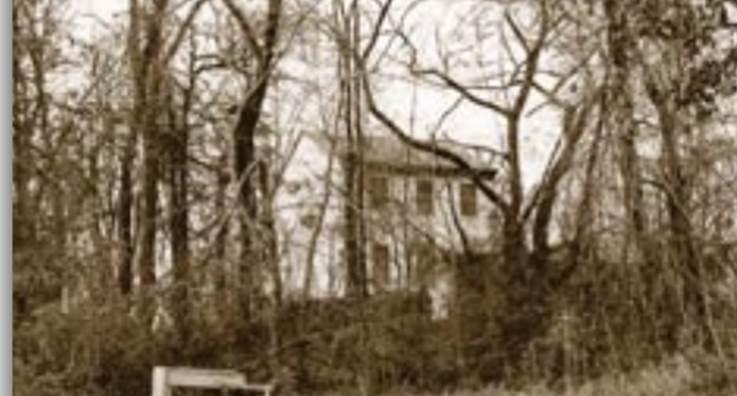The Jones Family

Multiple generations of the Jones family, both enslaved and free before the Civil War, lived in Arlington’s Green Valley/Nauck neighborhood and helped build an active and thriving African American community there.
The earliest records are for Edy Jones, who was mentioned in a February 1786 list of enslaved people at Mount Vernon compiled by George Washington. The list describes Edy as being 13 years old and one of the “labouring women.” Edy married Davy, an enslaved carpenter who worked at the Mansion House Farm, one of the five farms that made up Mount Vernon. While still enslaved, Edy and Davy had two daughters. In 1801 the family was freed, based on the stipulations of Washington’s will. The couple then had several other children, including Levi Jones, born in Arlington between 1810 and 1813.
Little is known about Levi’s early life, but in 1839 records show that he married Sarah Ann Gardiner in Washington, DC. Sarah Ann was enslaved by Anthony Fraser, whose Green Valley Manor lay near the present-day intersection of 23rd Street and Arlington Ridge Road. To be near his wife, Levi bought 14 acres of land in Green Valley/Nauck in 1844. He farmed the property, planted a peach orchard, and built a 14- by 16-foot two-story log cabin as well as two barns. His property lay on present-day Shirlington Road near Four-Mile Run Drive.
The couple had seven children: Isaac (born in 1845), Levi (1846), Mary Ann (1849), Susan (1850), Louisa (1853), Elizabeth (about 1857), and Martha (about 1862). The children, whose status was determined by that of their mother, were born enslaved.
During the Civil War Union troops wreaked havoc in the area, including on Levi’s property, where they stole or destroyed much of what he had built. After the war, Congress established the Southern Claims Commission to compensate citizens for items that Union troops had used, stolen, or destroyed. In the 1870s Levi submitted a claim for $2,580, covering the loss of, among other things, his house, barn, fencing, horse, cow, hog, peach trees, and hay. A man named George Shorter testified in support of a number of Levi’s claims, including the loss of his horse:
I know Levi Jones had a big horse when I went on his place. . . . I was at Levi Jones when they came for the horse, and I heard the soldiers ask for the horse. I saw a soldier ride it toward the camp and I saw the horse afterwards working in the camp. The horse was never brought back to Levi Jones and I never saw the horse after that.
The commission awarded Levi Jones $183 in 1877.
The war also delivered the family from enslavement. As Isaac Jones said in his 1873 testimony before the Southern Claims Commission, “I went to live with my father in 1862. My father was free, but my mother was a slave woman when I was born. I belonged to Mr. Fraser until I was made free by the war.”
After the war, the couple built a larger house on their plot and were instrumental in the development of the Nauck community in the 1860s and 1870s. For a time, they hosted church services in their home. They sold land to other freed slaves. In 1868 Levi and other community members submitted a petition to the Freedman’s Bureau for a school in their neighborhood:
As there is no school in our naborhood nearer than Elixander, wich leaves us destitute of any School at all for our children so we the under sign do there for beg you to assist us with a House and teacher as we have secured the Ground.
Levi is listed first on the petition, along with 11 others.
In 1870, Levi appears in an agricultural census, which reports that he has 17 acres of “improved” land, one horse, two milk cows, and one “other” cow and grows Indian corn. On July 22, 1886, Levi died. According to a death notice in the Alexandria Gazette, he died of complications from a broken leg suffered when he fell down a flight of stairs.
His wife, Sarah Anne, remained in Nauck for nearly three more decades. She subdivided her property into seven lots and by 1913 conveyed the majority of the land to family. She died on June 20, 1915, at the age of 95. Levi and Sara are buried at the Lomax A.M.E. Zion Cemetery.
Isaac, a farmer like his father, remained in Arlington after the war. In 1865 he married Maria Frazier. The 1900 census shows that Isaac’s household consisted of Isaac and Maria, as well as five children: Kitty (age 24), Isaac Jr. (age 21), Washington (age 18), Anthony (age 17), and Maya (age 9). Also living with the family was Maria’s 92-year-old mother, Catherine Frazier. Isaac died only a few years after his mother, in 1917, of bronchopneumonia. He was 71 years old. He is buried in the Lomax Cemetery, as are his wife and his children Kitty, Isaac Jr., Washington, and Anthony.
Images
